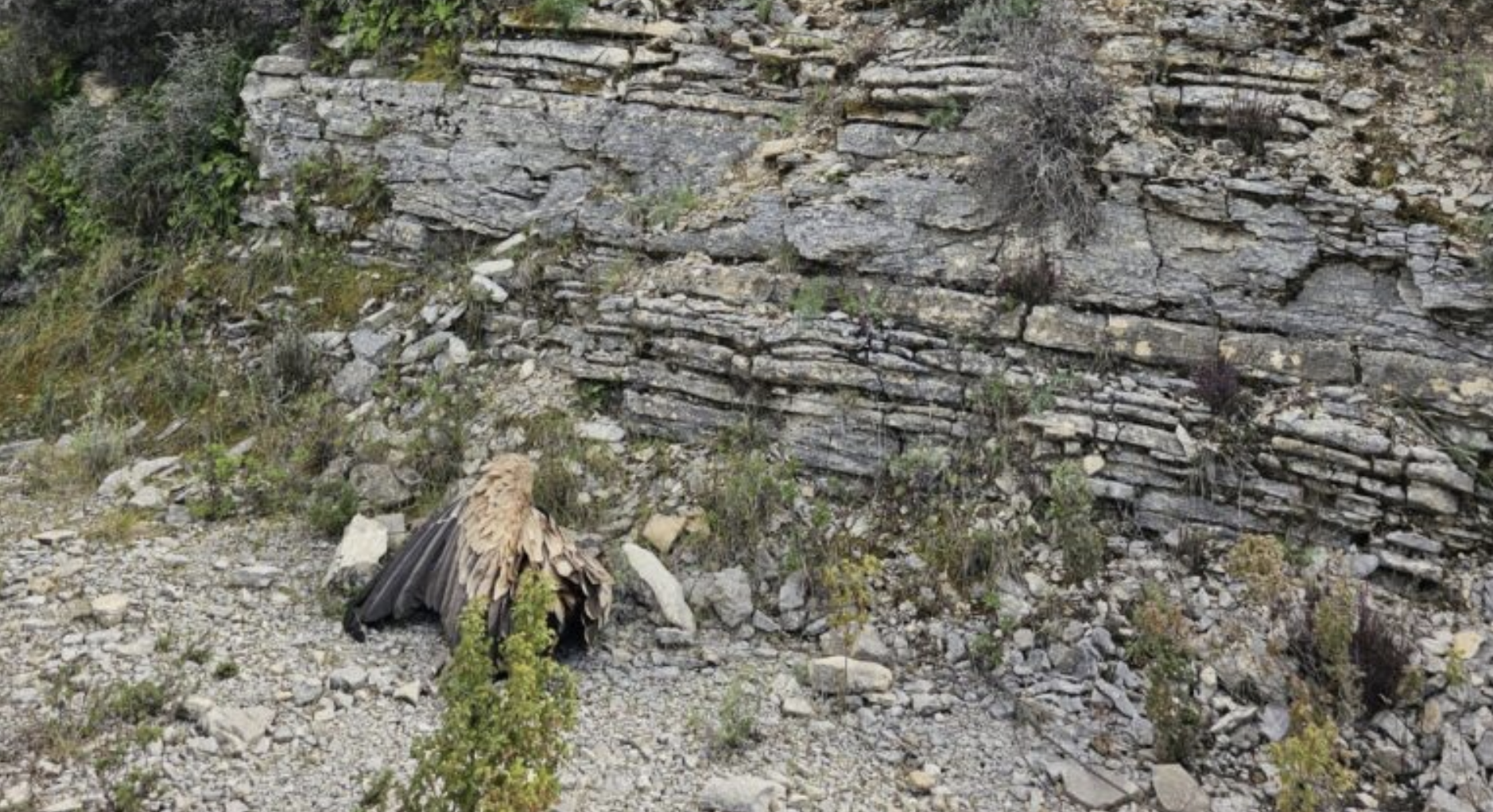
The Griffon Vulture egg laying period kicks off in Sardinia as the LIFE Under Griffon Wings Project reports the first clutch!
First Griffon Vulture clutch in Sardinia
On 18 January, a conservationist was monitoring the Griffon Vulture colony in Bosa and observed the first clutch of the breeding season in Sardinia – signalling the start of the egg laying period on the island. Now the pair will keep busy, incubating the egg until it hopefully hatches in a couple of months. This is a very delicate period for breedings pairs, and breeding success also depends on our behaviour. So, if you are a nature lover, tourist, hiker, and photographer, please respect the area and the vultures. The photograph above was taken without disturbing the birds by using digiscoping, which means taking a picture through the telescope to observe the birds from a safe distance.
Griffon Vulture breeding season
The breeding season for Griffon Vultures begins in late autumn and continues until the young have fledged the nest between June and August and starts with rituals that cement the bond between a breeding pair. This pair bonding behaviour involves displays of aerial acrobatics with pairs flying in tandem as well as mutual preening and nest building with males sourcing the majority of the nest building materials, nesting in high cliffs or mountainous colonies. Following successful copulation, clutches are laid between January and April with clutches consisting of usually one egg which is incubated for around 55 days. Breeding Griffon Vultures will raise their chick until it fledges the nest after around three months after hatching.
Griffons Vultures in Sardinia

Distributed over the whole island up to the late 1940s with an estimated population of 800 – 1200 individuals, the population of Griffon vultures in Sardinia dropped rapidly after the Second World War until the outlawing of poisoned baits in 1977. Now the species is restricted to the north-western part of the island and during a 2013 survey consisted of just 30 territorial pairs and 130 individuals.
Monitoring of the local breeding population in 2018 suggests there are approximately 50 pairs of griffons breeding with the population slowly increasing and responding well to all the investment and actions being taken under the LIFE Under Griffon Wings. In 2019, a total of 34 fledglings were produced – a new record.
LIFE Under Griffon Wings

Led by Sassari University, the LIFE Under Griffon Wings project aims to improve the conservation status of Griffon Vultures. Their conservation efforts include improving food availability and establishing a network of farm feeding stations that are managed by the livestock breeders themselves. Furthermore, forming an anti-poison dog unit and developing communication actions to raise awareness on the threat caused by the illegal use of poisoned baits as well as carrying out an extensive restocking programme to enhance the small population by translocating around 60 birds from wildlife rehabilitation centres in Spain to Sardinia.
The Vulture Conservation Foundation (VCF) supports this important conservation project which was developed by the University of Sassari in partnership with the Municipality of Bosa, the Forestry Agency and the Corpo Forestale di Vigilanza Ambientale. The project is implemented in collaboration with the regional Departments of Environmental Protection and Health, the Regional Natural Park of Porto Conte, the Instituto Zooprofilattico Sperimentale of Sardinia.
The VCF secures and transports the Griffon Vultures from Spain, and up until now, provided a total of 62 birds, fulfilling the requirements of the project.



